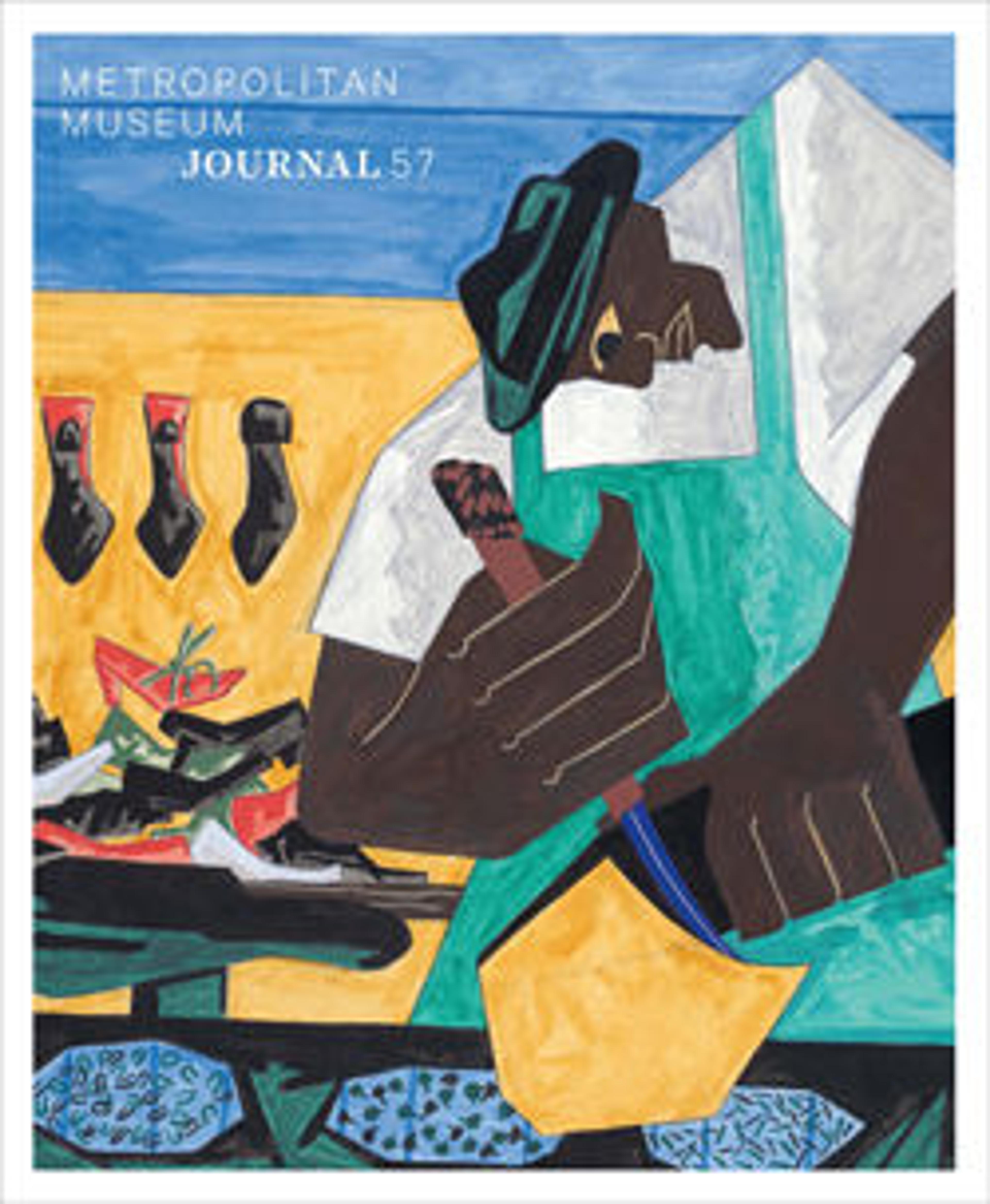Saint Lawrence Enthroned with Saints and Donors
Saint Lawrence is shown enthroned, his feet resting on the grill on which he was martyred. He is flanked by Saints Cosmas and Damian, whose cult was closely associated with the powerful Medici family. The imagery reflects the political allegiances of Alessandro Alessandri (1391–1460), who commissioned it as an altarpiece for his family’s church at Vincigliata in the hills above Florence. A Florentine merchant and a member of its civic government, he kneels with his two sons in the foreground. The robes of the three saints feature a pseudo-Arabic script, which acts as an intellectual reference but is not intended to be readable. Pseudo-scripts, a common phenomenon in fifteenth-century Italian painting, speak to the region’s close relationship with the eastern Mediterranean.
Artwork Details
- Title:Saint Lawrence Enthroned with Saints and Donors
- Artist:Fra Filippo Lippi (Italian, Florence ca. 1406–1469 Spoleto)
- Date:1440s
- Medium:Tempera on wood, gold ground
- Dimensions:Central panel (a), overall, with arched top and added strips, 47 3/4 x 45 1/2 in. (121.3 x 115.6 cm); right panel (b) 28 1/2 x 15 3/8 in. (72.4 x 39.1 cm); left panel (c) 28 1/2 x 15 1/2 in. (72.4 x 39.4 cm) [panels substantially altered in size and shape
- Classification:Paintings
- Credit Line:Rogers Fund, 1935
- Object Number:35.31.1a–c
- Curatorial Department: European Paintings
More Artwork
Research Resources
The Met provides unparalleled resources for research and welcomes an international community of students and scholars. The Met's Open Access API is where creators and researchers can connect to the The Met collection. Open Access data and public domain images are available for unrestricted commercial and noncommercial use without permission or fee.
To request images under copyright and other restrictions, please use this Image Request form.
Feedback
We continue to research and examine historical and cultural context for objects in The Met collection. If you have comments or questions about this object record, please contact us using the form below. The Museum looks forward to receiving your comments.
